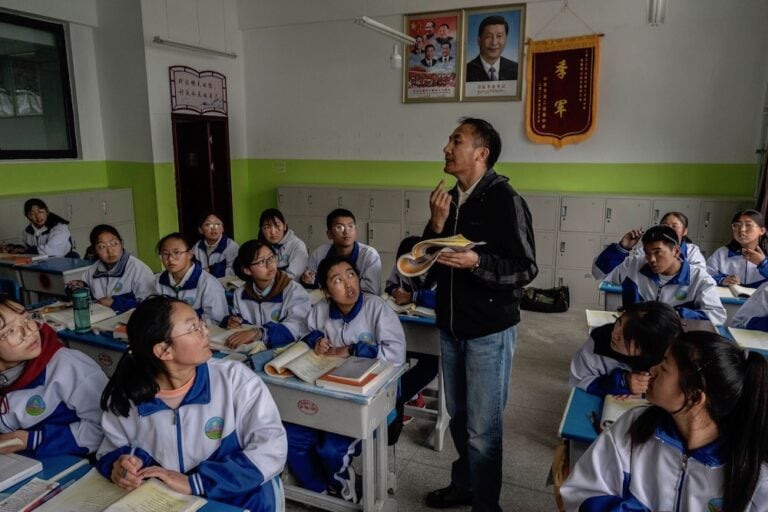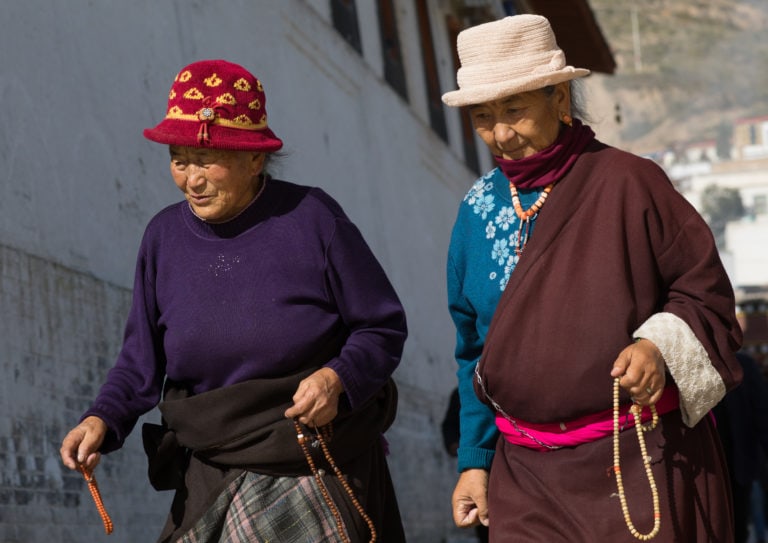According to Human Rights Watch, "Security measures designed to curtail the right to free expression, association, and religious belief in Tibetan monasteries are not legitimate".
(Human Rights Watch/IFEX) – New York, October 12, 2011 – The Chinese government should immediately end excessive restrictions on Kirti monastery in the Aba (“Ngawa” in Tibetan) prefecture of Sichuan province, and lift similarly heavy-handed security measures imposed on other lay communities and monasteries in the region, Human Rights Watch said today. These measures appear to have fueled tensions between Tibetans and Chinese authorities in the region, contributing to desperate acts of protest by individuals, including self-immolations, the latest two on October 7, 2011.
Since the protests of 2008 in the region, the Chinese government has imposed drastic restrictions on Tibetan monasteries in the Aba prefecture of Sichuan province and other parts of the Tibetan plateau. These measures include brutal security raids, arbitrary detentions of monks, increased surveillance within monasteries, and a permanent police presence inside monasteries to monitor religious activities.
“Security measures designed to curtail the right to free expression, association, and religious belief in Tibetan monasteries are not legitimate,” said Sophie Richardson, China director at Human Rights Watch. “Even worse, those measures are exacerbating the tensions. Instead, the government should address the region’s underlying grievances.”
Human Rights Watch has documented a dramatic increase in security expenditure by the Chinese government in the Aba region since 2002, although there were no reported incidents of significant unrest until 2008. These findings suggest that the increase in government spending on security has contributed to provocative policing techniques such as monastery blockades and the mass detentions of monks that have repeatedly contributed to local discontent and unrest.
The increased security measures appear to have been a major factor in the escalation of tensions that have led to several protests in which monks tried to set themselves on fire to bring attention to the situation in Aba. In the October 7 incident, Choepel and Khaying, two young Tibetans who had been monks at Kirti monastery (“Ge Erde” in Chinese), set fire to themselves.
The monastery has been the site of six self-immolations this year, as well as larger nonviolent protests by monks and lay people, many of whom were subsequently detained. The six victims were:
• Phuntsok Jarutsang, 20, who set himself on fire on March 16 to commemorate the March 2008 uprisings in the region. Security personnel tried to extinguish the flames but also allegedly beat Phuntsok, who died the next day, leading to protests in the following days and weeks by more than 1,000 lay Tibetans and monks.
• Lobsang Kalsang, 18. Phuntsok’s younger brother, who set himself aflame on September 26. He was hospitalized, but no information has been made available about his physical well-being or whereabouts.
• Lobsang Konchok, approximately 18, who also set himself on fire on September 26. No information is available about his condition or whereabouts.
• Kelsang Wangchuk, 17, a novice monk, who attempted to set himself on fire on October 3 and reportedly suffered limited burns to his legs, and allegedly sustained a serious head injury during detention. Security forces doused the flames.
• Khaying, 20, also known as Lhunyang, and Choephel, both former Kirti monks, participated in self-immolation protests on October 7, shouting slogans as they set themselves on fire. Khaying was taken to a local hospital, where he died the next day.
• Choephel, 18, suffered minor injuries after police and others extinguished the flames, Chinese news sources said. But other sources from the region suggested immediately afterward that he was in critical condition. He died on October 11.
No credible evidence has emerged so far to suggest that the monastery authorities or its other members were involved in the actions of these individual and former monks. Yet the security response to each of these incidents has been to punish Kirti monastery and the local community through collective punishment, police raids, roadblocks, and show of force by the People’s Armed Police (PAP).
(. . .)


